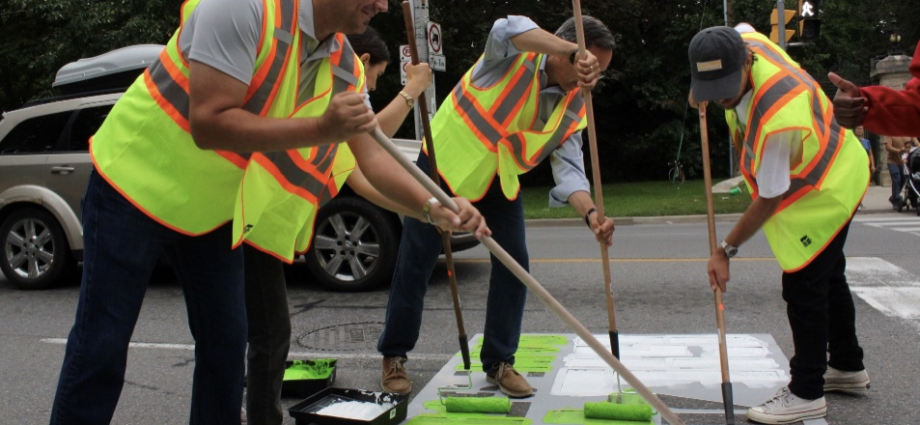Mayoral candidate Gil Penalosa makes the case for putting pedestrians first
By Toronto Correspondent Carlos Ruiz
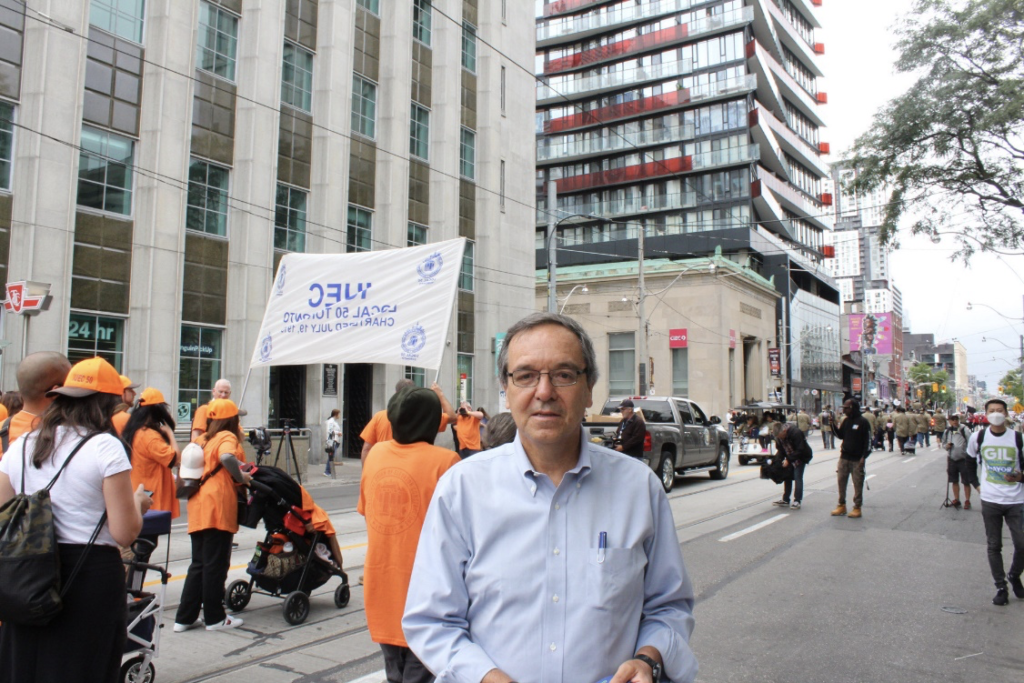
“Walkability is good for mental health, for physical health, for climate change, for economic development. We need to realize that walking is not an end but a means for having a city where everyone can live healthier and happier. Walking is interwoven with having an equitable and sustainable Toronto, that’s why we need to make it a good place to walk.“
-Gil Penalosa
It’s Labor Day weekend in Canada. This means, tragically, that summer is over and that children are going back to school, but this also marks the beginning of campaigns for the Toronto municipal election. On October 24th, Torontonians will head to the polls to elect their city councilors and to decide whether they want to re-elect the current mayor, John Tory, who is running for his third term or elect a new candidate to lead Canada’s most important city. Although there are 30 registered candidates running for mayor, only one of them, Gil Penalosa, poses an actual challenge to mayor Tory’s re-election.
Gil Penalosa is a world-renowned urbanist who over his career has advised decision makers in more than 350 cities on all 5 continents. Originally from Colombia, Gil served as park commissioner in Colombia’s capital, Bogota, under the administration of his brother, Enrique Penalosa. Gil oversaw the construction of dozens of parks and green spaces in Bogota, amongst them Simon Bolivar park, perhaps the city’s most important and symbolic park. He was also an early proponent of Ciclovia, a city initiative that closes main roads to cars in order to dedicate that space for cyclists, pedestrians, and cultural activities and this initiative has been replicated in multiple cities across the world. After moving to Canada, Gil founded 8 80 cities, a non-profit organization based on the premise that everything done in a city has to be great for an 8-year-old as well as for an 80-year-old.
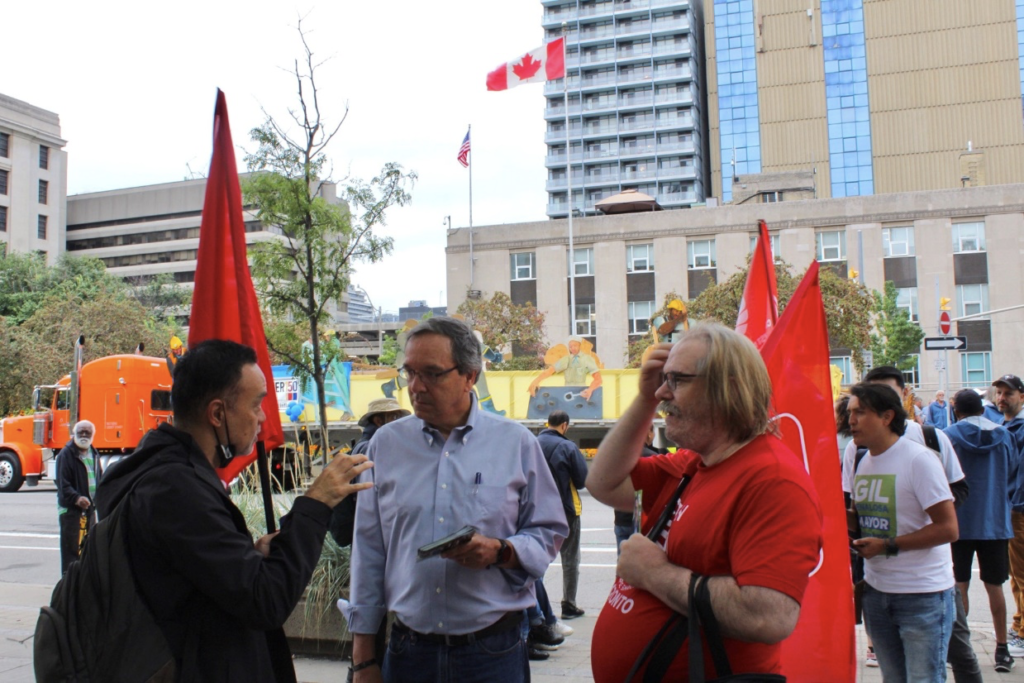
I met with Gil at the Labor Day parade in Downtown Toronto while he was out campaigning with a group of volunteers. It was an overcast and chilly day and although we were lucky that it didn’t rain, the gloomy sky was a reminder for us all that winter is coming. However, the gloomy vibe evaporated as the first floats started moving, blasting electronic music, dancehall and rock & roll. The waving, smiles, and sudden dance moves definitely warmed up the air and everybody seemed to be having a good time. As we watched the colorful floats composed of members of different trade unions and public employees move along, I got to ask Gil some questions, mainly around the issue of walkability in Toronto.
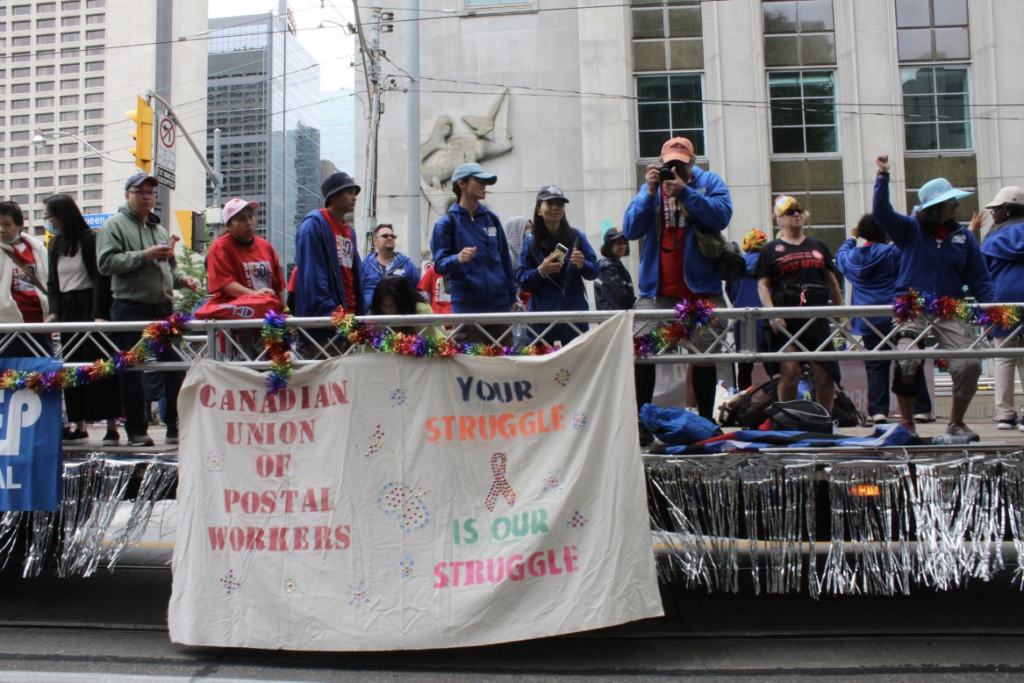
What do you think are the main challenges pedestrians face in Toronto today?
We need to become visible. We need people to realize that in all of our trips, everybody walks, everybody is pedestrian. Every single trip begins and ends by walking. We walk to the car, to public transit, to places, so we need to make walking safe and enjoyable for everyone.
Toronto has a strong car culture. Close to two million vehicles enter the city every day. How can that car culture be changed and what part will you play in that?
We need every single driver to understand that their own trip began and ended with walking. Their family members walk. When people are being killed or injured by drivers, there is no political color, and there is no specific background, so we need to make it safe and enjoyable for everybody. No one should be dying on the streets, including drivers.
How can pedestrian be safe in Toronto?
The speed limit on all neighborhood streets is going to be 30 km/h. We need to make all intersections on arterials safe for everyone. We are also going to eliminate all billboards. The only reason there are billboards is to attract the attention of drivers. Why are they trying to get drivers’ attention when we need them to pay attention to driving? Lastly, we will eliminate right turns on red. With these measures, we are going to make walkability safer.
Your pedestrian and bike-friendly ideas are well received in the central parts of the city. How is that message received in more suburban areas where car is king?
In the suburbs, the car is king only because the mayor and councilors for many years have failed the suburbs. The mayor and city council have not made nice sidewalks, crosswalks or biking networks. We are going to give the suburbs top priority and I’m sure once there are facilities then a lot of people are going to walk and bike and some still will use cars but everybody needs to do it safely. The suburbs should not be any different than downtown. People should have options.
Toronto is a city of extreme climates. Freezing temperatures in winter and constant heat warnings during the summer. Is the city ready to face the challenges of climate change?
We need to be much better at dealing with climate change. Part of it is why we need to have fewer car trips. Also, our city is not that cold. We only have 123 cm of snow per year (20-year average), our winter is more like a mental winter. We should really realize that there’s no such thing as bad weather, there is bad clothing. We need to have safe places to walk, bike, and use cars all time.
What other cities do you look up to for inspiration?
I like some of the winter activities that Winnipeg and Edmonton are doing. I like the bike-ability of Copenhagen, I like the walkability of Melbourne. We need to learn from others but we need to do our own thing. We need solutions for Toronto specifically. Even neighborhood by neighborhood, each area is different. So we can be inspired by others but do our own thing.
You are a notorious walker and runner. What is your favorite spot for walking in the city?
My favorite spots for walking are the streets that are lively, that have a lot of local stores, and where I see lots of people of multiple backgrounds. For running half of the time I do streets and the other half I run on the ravines and trails.
Anything else you want to say to Torontonians who care about walkability?
Yes, we need to make it safe and enjoyable. Walkability is not only about getting from point A to point B. Walkability is good for mental health, for physical health, for climate change, for economic development. We need to realize that walking is not an end but a means for having a city where everyone can live healthier and happier. Walking is interwoven with having an equitable and sustainable Toronto, that’s why we need to make it a good place to walk.
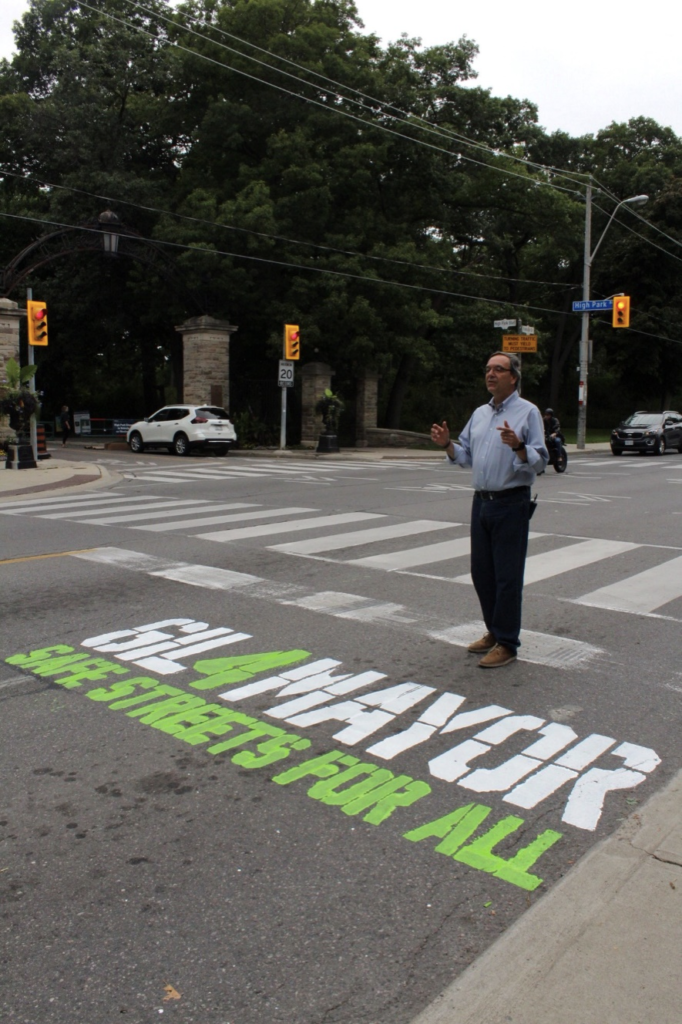
A few hours after the parade I cycled to High Park, where I knew Gil, his family, and a couple of volunteers would be. They were gathered at the entrance of the park with some painting supplies. They were planning to paint a slogan that read “Gil4Mayor, Safe Streets For All” in the middle of a busy intersection in one area of the city where some pedestrians have been killed by cars and some cyclists have been injured and harassed by intolerant motorists.
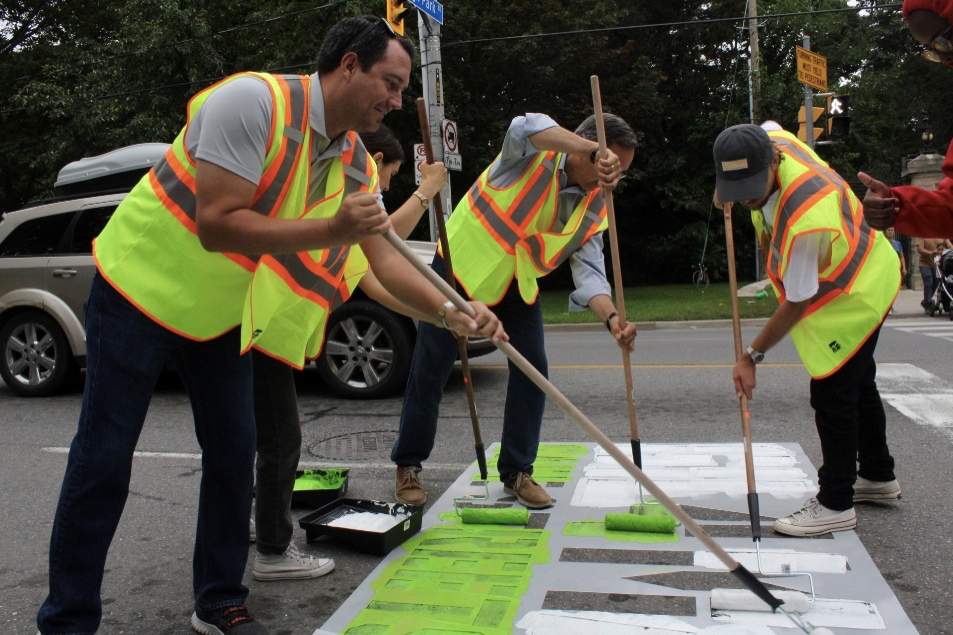
This was, without doubt, an unusual and daring act by a candidate and dozens of drivers were very unhappy while Gil and his team blocked one traffic lane waiting for the paint to dry. Angry comments didn’t take long to appear on Twitter and Instagram and many were asking the police and city to fine Gil. But none of this seemed to trouble Gil who, very calmly, kept making the point that it is indeed possible to make streets safe and enjoyable for everyone, especially for pedestrians. Perhaps pedestrians in Toronto do have a chance to be prioritized over cars.

Carlos is an avid walker and cycling enthusiast based in Toronto, Canada. With a background in Political Science and teaching, he believes walkable cities play a vital role in the development of local economies, the environment and public health as well as contributing to the strengthening of democratic values. Carlos is a strong advocate of changing the car-centric culture of North America and strongly believes in education as the most important tool for positive change.
Read Toronto & Bogotá Correspondent Carlos’ content here
Learn more about the Global Walkability Correspondents Network here

